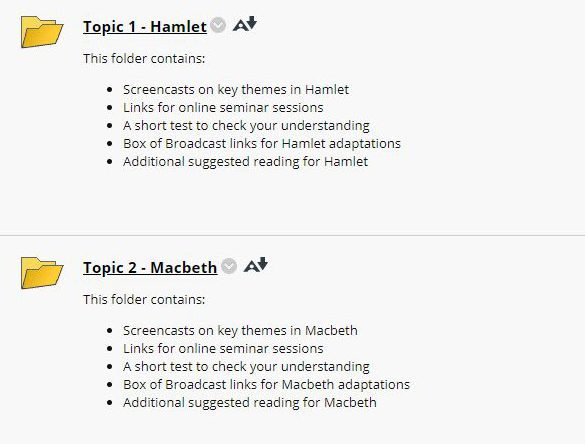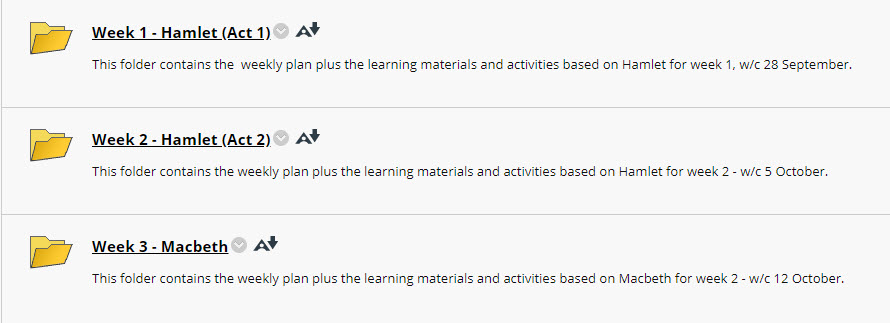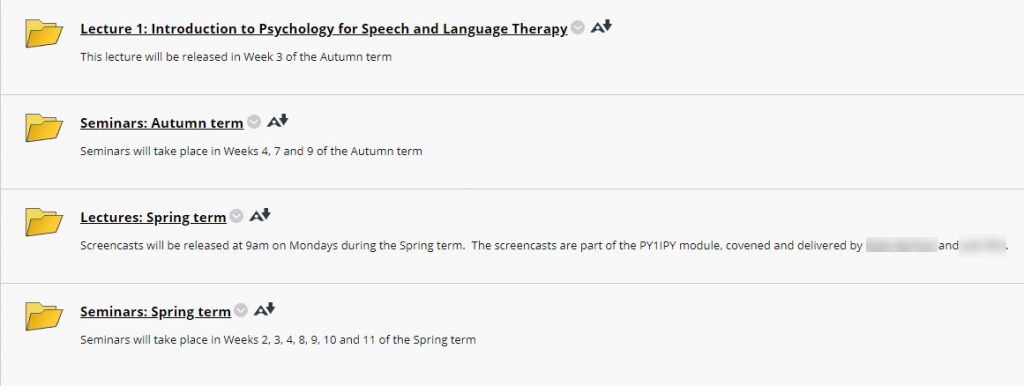Use items and folders to present your module content to your students. The way you choose to structure your content will depend on how you wish to curate this experience for your students.
Help your students find the material and activities they should be focusing on with concise information and clear instructions.
- Group common content using folders that complements the way the module is taught, for example by topic, week, or lecture.
- Label folders, items and documents clearly and consistently. Use descriptive titles that are meaningful to students.
- Prioritise key or important headings or information by placing it above other content.
By Topic
Use a topic-based structure to organise your module into self-contained segments.
This structure works well for self-paced modules that allow students to select which topic to complete next as well as modules that use current events to demonstrate concepts.

By Week
Organising content by time can help students stay on track. You can make folders for future weeks unavailable until they are needed to keep students focused. This structure works well for courses where students need to move through the content at the same pace.

By Lecture
Use a lecture-based structure can promote a flipped approach, as you can organise relevant materials together, such as pre-reading, related content, recorded lecture material, and self-marking formative assessment tasks. This structure works well for large introductory courses where lectures are the primary method for delivering content.

Folders
Clearly labelling folders and signposting the content within provides a framework that is easily navigable and allows you to highlight the relationships between learning materials from a top-level perspective.
Like your menu, the headings of your folders should be easily distinguishable. Outlining the contents of folders allows you to arrange information in a way that is consistent with its importance and reduces stress for students when attempting to locate or relocate material.

Items
Items are flexible ways to add content, such as files, links, written instructions, or embedded media, into Blackboard. Well-arranged items which are consistent with the overarching structure of the course.
When adding files and screencast content, it is important to ensure that these resources are clearly labelled and that links between concepts are easily identifiable.
Clearly framing resources allows you to highlight relationships between materials and previous learning and prompts students to make their own links between concepts, as well as giving you a space to prompt further action.
You may wish to consider using the icons from the Module Roadmap resources to help link activities to your core teaching.

